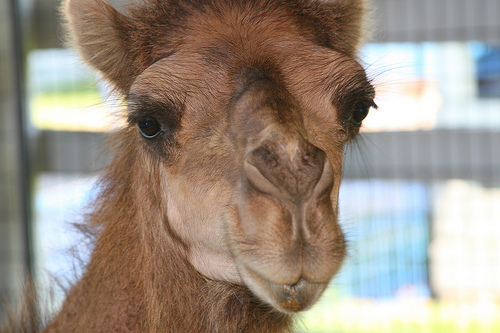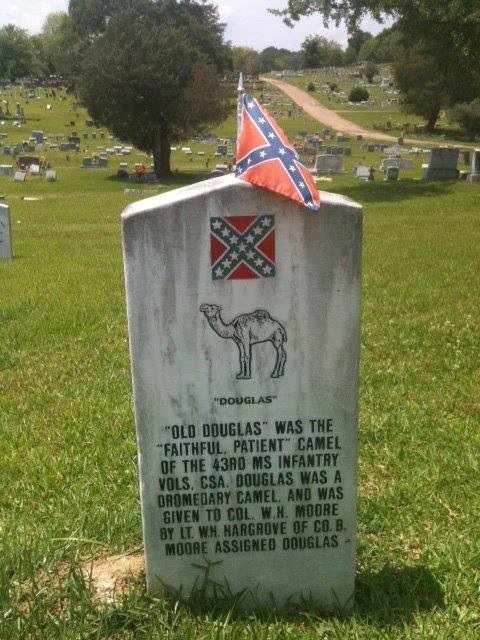At first glance, you might think that Douglas the Camel is the title of a children’s television program or a book for early readers. Not in this case, however. Douglas the Camel or “Old Douglas” was a domesticated camel used by Company A of the Forty-third Mississippi Infantry, part of the Confederate Army during the American Civil War. Because of Old Douglas, the Forth-third Mississippi Infantry came to be known as the Camel Regiment.

Douglas was originally part of a U.S. War Department program called the Texas Camel Experiment. It was believed that camels could be used as a possible alternative to horses and mules. Jefferson Davis who became Secretary of War in 1853 was a strong believer in the use of camels in military operations. In his annual report for 1854, Davis wrote, “I again invite attention to the advantages to be anticipated from the use of camels and dromedaries for military and other purposes….” In March of 1855, the U.S. Congress appropriated $30,000 for the project.
In June of 1855, Major Henry C. Wayne, whose opinion agreed with that of Davis, departed New York City on board the USS Supply, under the command of then Lieutenant David Dixon Porter. After stops throughout the Mediterranean Sea Wayne and Porter purchased thirty-three camels, including two Bactrian, twenty-nine dromedaries, one dromedary calf, and one Booghdee (a cross between a male Bactrian and a female dromedary). They also procured proper pack saddles and covers and hired five camel drivers. In 1856, Porter was once again dispatched to the Mediterranean to acquire more animals. He returned with a herd of forty-one camels and nine additional camel drivers. The newly acquired animals joined the first herd at Camp Verde, Texas, which had been officially designated as the camel station.
The camels were used in several expeditions to the southwest. The camels proved to withstand the brutal heat and scarcity of water much better than horses and mules. In the spring of 1861, Camp Verde fell into Confederate hands until recaptured in in 1865. When Union troops reoccupied Camp Verde, there were estimated to be more than a hundred camels at the camp and many others roamed the countryside. In 1866, the U.S. Government was able to round up sixty-six camels. The camels were sold and the U.S. Army’s camel experiment was complete.
It is not known how Douglas, a dromedary (one hump) camel, came to serve with the 43rd Mississippi Infantry. He was a gift to Colonel W.H. Moore, who assigned him to carry the instruments and knapsacks for the regimental band. Douglas participated in the Battles of Iuka and Corinth under Major Generals Sterling Price and Earl Van Dorn, respectively, before being shot by a Union sharpshooter on June 27, 1863, during the Siege of Vicksburg. Douglas routinely broke free of his tether, but usually used his freedom to graze. However, on that fateful day in 1863, he wandered into no man’s land between the Union and Confederate armies and paid the ultimate price.
To find the grave of Douglas the Camel turn into the Vicksburg City Cemetery on Lindsey Street from Sky Farm Ave. Just after the first cross street you will see a group of graves on the left with Confederate flags. Douglas’s marker, the one with the camel on it, is on the right side of the group, second row in.





